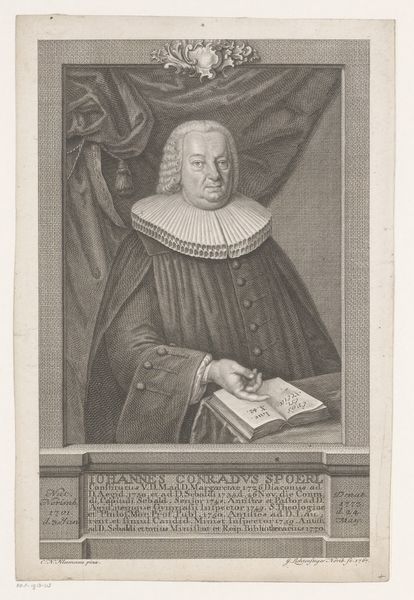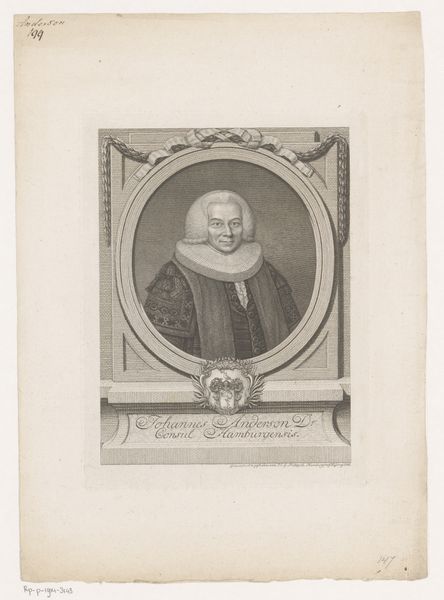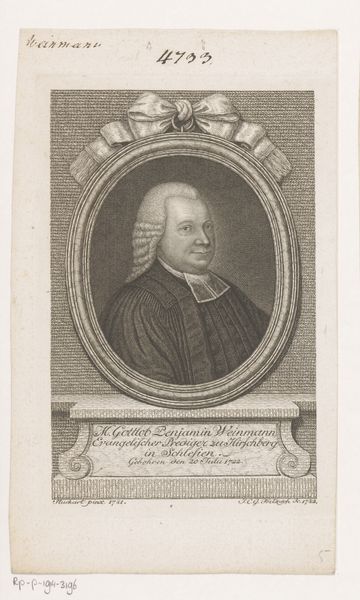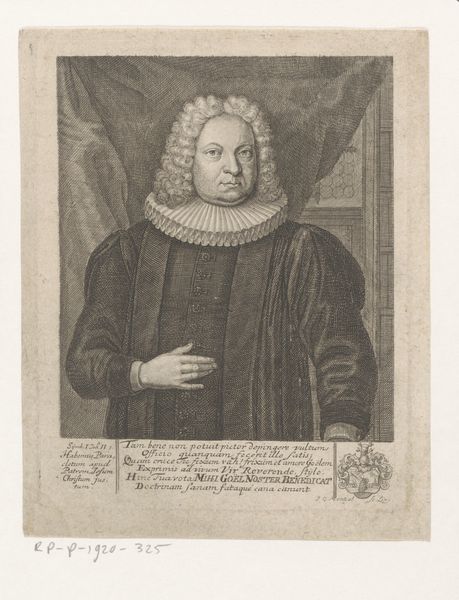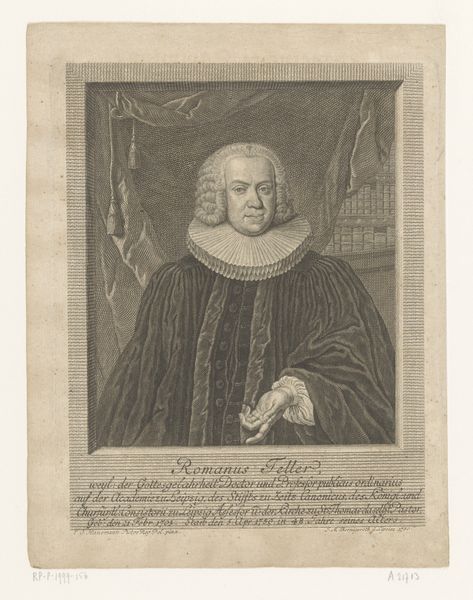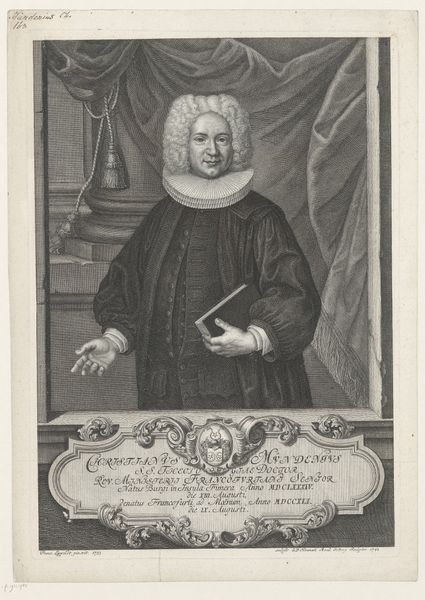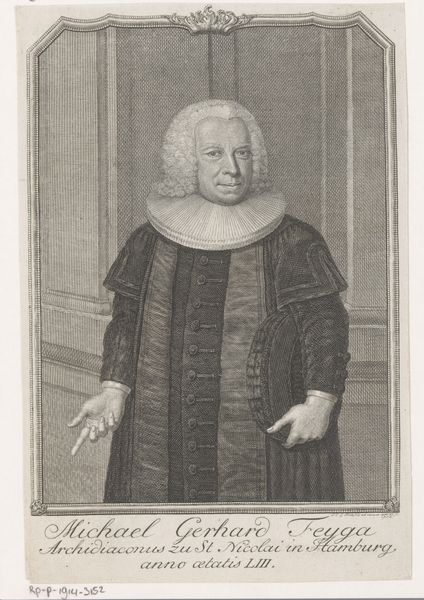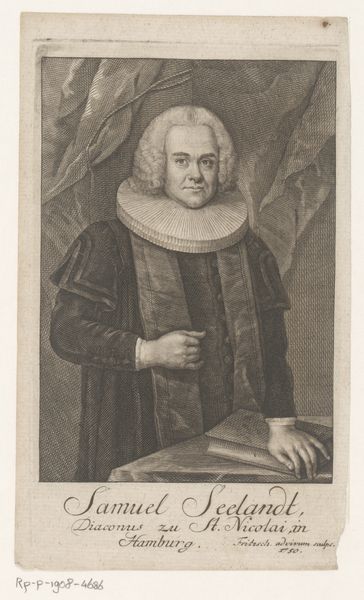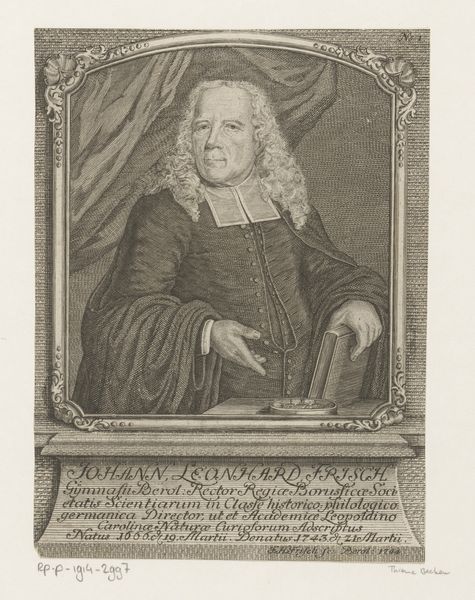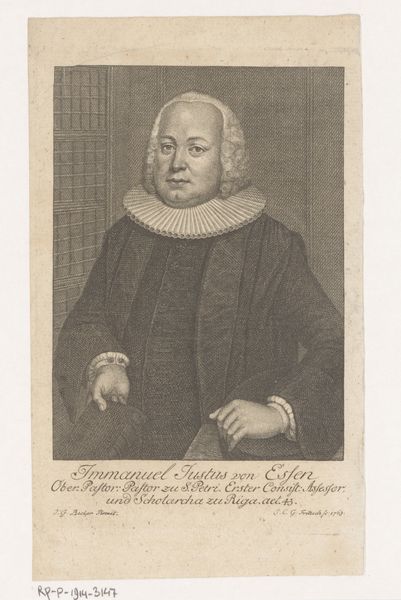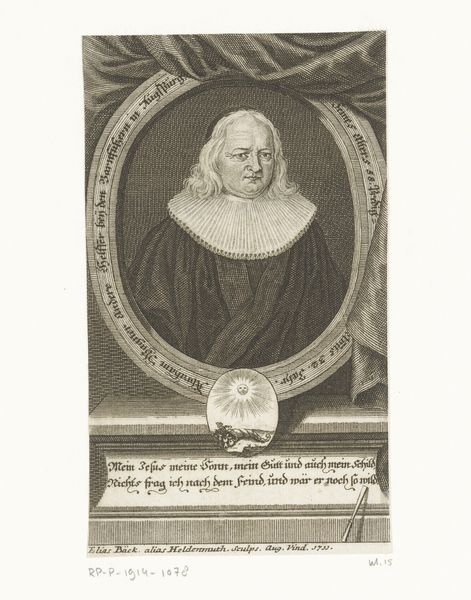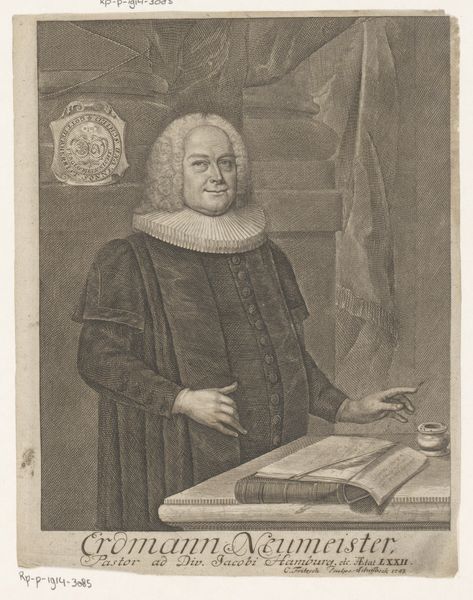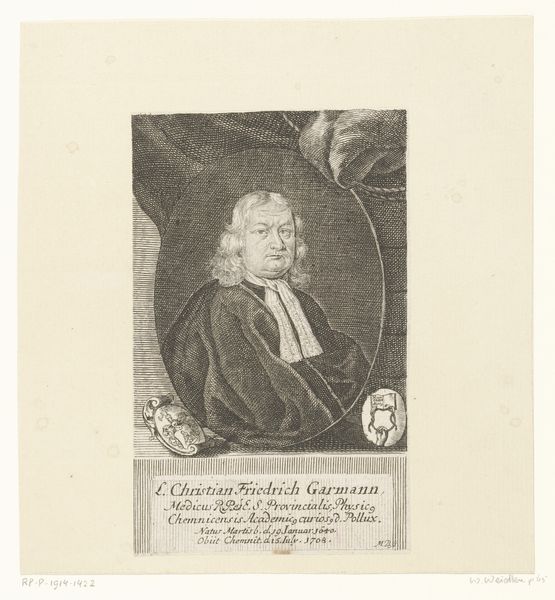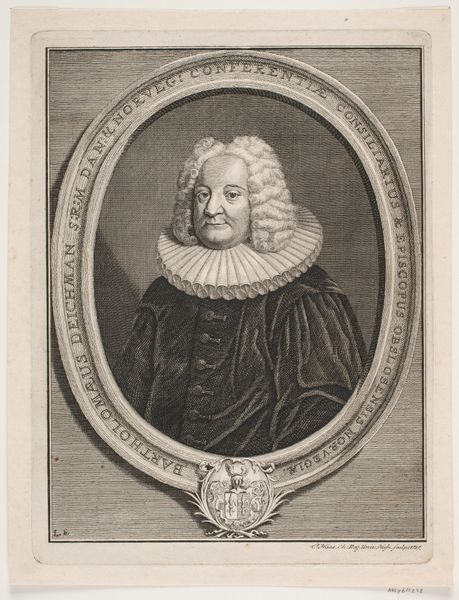
print, engraving
#
portrait
#
baroque
# print
#
old engraving style
#
engraving
Dimensions: height 146 mm, width 104 mm
Copyright: Rijks Museum: Open Domain
Editor: Here we have David Herrliberger's "Portret van Johann Caspar Ulrich," made sometime between 1715 and 1768. It's a baroque portrait created as an engraving. I'm really struck by the tight composition. It feels very formal and contained, but also incredibly detailed for a print. What do you see in this piece, focusing on its artistic construction? Curator: The artist has established a strong sense of visual hierarchy. The sharp lines that delineate the central figure are in stark contrast with a background of near uniform texture. The figure's collar almost leaps from the surface. Note also the strong geometric patterns in the lower frame, providing structure and stability beneath the effusive personality of the man above. Editor: That contrast is really interesting. The geometric lines make the elaborate ruff around his neck look almost... playful, against such severe geometry. But why emphasize structure so explicitly within a portrait? Curator: Structure, in formalist terms, underscores the artwork's status as art. The rigorous use of line and form invites us to appreciate Herrliberger’s mastery. Consider how the framing device not only isolates the portrait, but reiterates geometric structures within the image itself. It invites contemplation about the artifice, the making of this image. Editor: I see! So the content, the 'who' of the portrait, almost takes a back seat to how it's made, how it's structured as an image. Curator: Precisely. Editor: That really changes how I see portraiture. I tend to think of the subject first, but this makes me consider the formal choices so much more. Curator: Paying attention to this artwork’s construction heightens its visual dynamism and reveals sophisticated meaning-making.
Comments
No comments
Be the first to comment and join the conversation on the ultimate creative platform.
